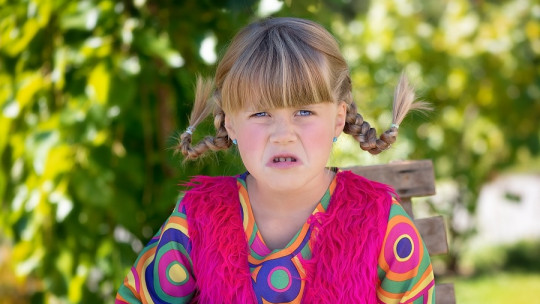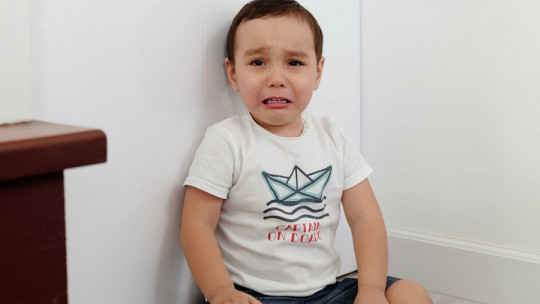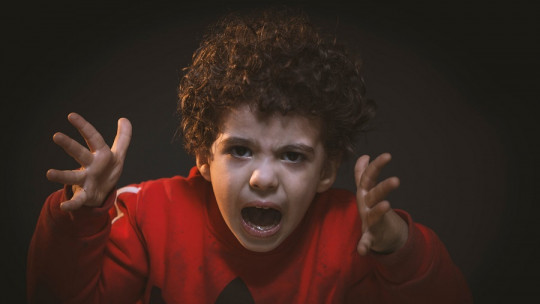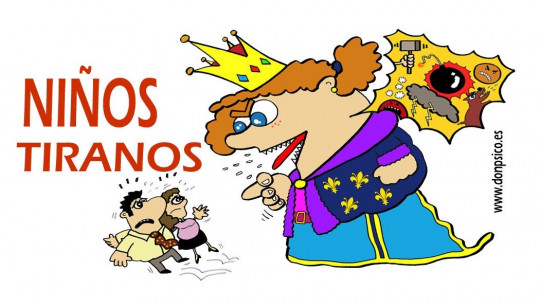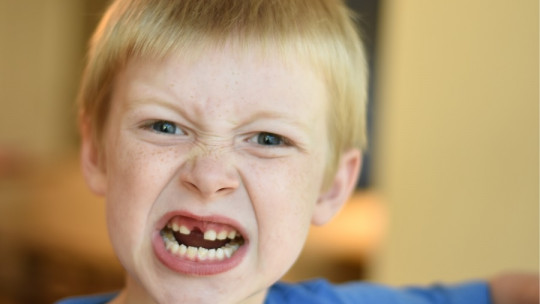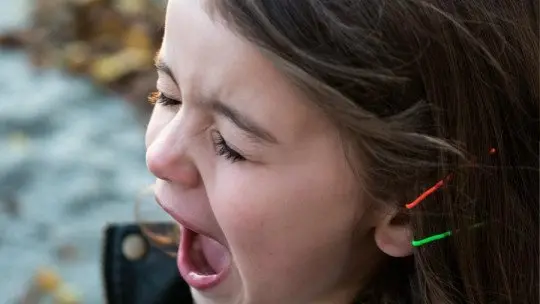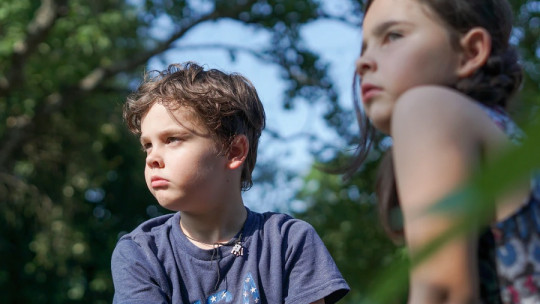
Tantrums, tantrums, whining and screaming. These are some of the ways in which the little ones in the house show us how angry they are and, sometimes, siblings, parents, grandparents and other adults, no matter how old we are, feel overwhelmed by the situation.
It is surprising to see how these little people, when they get angry, do so in a way that is not “small” at all. There are children who show their anger by keeping quiet and simply ignoring us, but it is not usually common. The normal thing is that they scream, cry very loudly and make it clear to us that they do not feel comfortable.
In situations like this, it is not surprising that many people wonder how to help a child control his anger and, fortunately for you, today we are going to discover a few techniques to achieve it.
How to help a child control his anger?
Everyone, even the calmest ones, gets angry sometimes, and this also applies to the little ones in the house: children get angry, and not in proportion to their height. The reasons behind their tantrum can be very varied, such as not buying them ice cream, forcing them to go to school on a day they don’t want to, not letting them watch TV a little more…
Childhood anger can manifest itself in multiple ways, all of them combining anger, irritability and resentment, just as it happens in adulthood. There are children who show their anger by keeping quiet, ignoring us or ignoring us, but others, the vast majority, are more “expressive”: they shout, throw objects, break them or even hit and insult their parents, classmates and friends. teachers. Anger is an emotion that, if not properly managed or controlled, can become very socially disruptive.
Per se, anger is like any emotion We should not think that, despite being unpleasant, it is something bad. Naturally we prefer to be content and happy rather than angry or sad, but our entire wide emotional repertoire is still an evolutionary resource, a way that human beings have to adapt to our environment, both natural and social.
Anger is an evolutionary resource that allows us to survive, to put ourselves in a position to fight in a situation that we consider unfair. It is adaptive, as long as our response is proportional to the threat we face.
The wrath It is normal in child development, which reflects the child’s efforts in his search for autonomy, understanding and attention This emotion manifests itself most strongly at various stages of development, especially between ages 2 and 4, preadolescence, and adolescence. As in adulthood, childhood anger occurs when the child has the subjective sensation of being faced with a threat or fear of a future threat, not necessarily dangerous for her life but for her physical, emotional and well-being. social.
Children feel threatened by more things than adults, in the sense that they perceive more elements as factors that put their personal well-being at risk. A fairly simple example to understand is when we don’t buy them ice cream.
A child will see this situation as a real violation of their rights, while an adult will, at most, feel slightly bothered. Fortunately, As they grow, they will learn to distinguish between seriously unfair situations from those that are not so unfair, in addition to managing their emotions better
Anger is not an easy emotion to handle in childhood and the younger you are, the worse it is. Naturally, not all children are equally irascible nor do they have to behave in the same way when they feel angry, but the methods that we can use for all of them are the same, although some may also be better for some children than others. .
1. Stay calm
It is very difficult for our child to learn to control his anger if we, adults, are not able to control ourselves We must set an example, especially when the child gets angry. We should not yell, slam doors and, much less, shake the child. For the child to learn to manage his anger, he must see how we, adults, have achieved it and that, therefore, it is something that can be learned.
If our response to the child’s anger is aggressive, his anger will become even more. If we scream, our child will imitate us and scream louder. It is difficult to control ourselves in these situations, but equally as parents we must make the effort to have good results.
2. Teach him to recognize this emotion
The younger the child is, the more difficult it is to calm him down in the middle of an attack of anger. Being so angry it’s hard to make him see reason. Sooner or later the tantrum will pass, and the time will have come to talk about what happened. The child, especially if he is very young, may experience difficulties when recognizing your emotions This is why adults must tell him that the emotion he has felt is called anger, asking him why he has reacted that way and what he feels once he has calmed down.
We must help you identify the cause of your anger. It is common for children to often not know what caused them to get angry, while in other cases it may be because a classmate has insulted or hit them or because something serious has happened in their environment. This is why, far from punishing or recriminating them for what they have done, we must find out why they have felt this way and see to what extent it is in our power to solve the problematic situation. As parents we must always support him.
3. Teach the child to act without anger
It is common for children to behave in an irascible manner because they lack the skills to solve what has frustrated them in a more peaceful way. Us, As adults, we may see what has made them feel this way as something easy to fix but that is because we have extensive experience and knowledge of the world, while a child who is, for example, only three years old, does not.
For this reason, once we know what has made them feel this way, we must offer guidelines to solve the problem in question. As part of their growth and learning, we must train them to learn to identify those factors that usually motivate their anger attacks. Once we have seen what causes your frustration, we must help you find solutions for future situations.
The reason why the child feels frustrated can be very varied and, as parents, we will hear all kinds of problems. Once you have told us, we can give you the most appropriate answers for each situation and have him compare how he felt after his anger attack and how he feels after using the advice we have offered It will be a matter of time before he incorporates the peaceful responses that we have offered into his behavioral repertoire.
4. Express emotions
Many ways children express anger tend to be socially disruptive, especially breaking things, name-calling, and hitting. At their ages, these behaviors, although neither desirable nor acceptable, are less serious than when done by an adult, of course, but it is still better that they do not manifest themselves.
If there is no way to get the child to apply calmer solutions to episodes of frustration or when things do not go well, it may be that he has a lot of contained anger inside. In this case we must never leave aside go to a child psychologist, who will try to find out what is the cause of so much contained anger. Likewise, we can make the child vent at home with truly effective techniques, at least in the short term and as long as there is no psychopathology behind it.
If the child tends to behave in a very destructive way in the middle of an attack of anger, you can suggest that he do some activities that will allow him to explore those emotions, in addition to express them in a more artistic and relaxing way Among these activities we have drawing, writing, painting and listening to music, with which you can represent your emotionality, whatever the child’s age.
5. Release tensions
While painting, writing and drawing are techniques that we could consider “passive”, ideal for making the child aware of what they feel in a more artistic way, there are also more intense ways to release all tension and calm the child.
Sport as a way to calm down is a classic Anything is valid: swimming, cycling, athletics, contact sports, football, basketball… any activity is good for releasing pent-up anger, in addition to providing psychological well-being thanks to the release of endorphins.
As surprising as it may seem, meditation techniques such as yoga or mindfulness are not at all advisable at these ages. Children, especially the youngest ones, have not developed enough self-control to calmly endure an entire session of these techniques. Before class is over, the most likely thing that has happened is that the child has become unfocused and impatient, becoming more nervous than he was before.
6. Develop self-control
Developing self-control is not an easy task, especially the younger they are. Their prefrontal cortex of the brain is still very immature, so their executive abilities are not fully developed The idea of self-control is still a very abstract notion in early childhood, although this does not mean we cannot incorporate it little by little. As his brain matures, he will be more able to understand this idea and, if we have taught it to him before, he will assimilate it as soon as possible.
We can explain to him what self-control consists of, giving him as many examples as possible, such as not reacting badly if there are no more ice cream left or if time to watch television has run out, or if he has to go pick up his room.
A practical way for you to learn the idea of self-control is incorporate the famous traffic light technique into your home Basically, it consists of explaining to the child how it works using three cards of three different colors: red, yellow and green. When we show him the red card it will mean that the child must stop because he is getting out of control, the yellow one will indicate that he must analyze what is happening and why he is behaving like that and the green one will indicate that he must express what he feels.
What we should not do
A fundamental idea that should be clear with anger is that it is a necessary emotion.
Showing anger in the face of injustice is something adaptive, inherent to our social evolution, and penalizing this feeling when it appears in situations where it should be shown implies repressing the person, making it more difficult for them to manage this emotion. Anger appears for some reason, more or less just ; It is a sign that something is not right. We must solve what causes it, both in the child and in ourselves.
Unfortunately, many parents do not understand this. It is normal to feel angry in certain situations and, although children get angry over less serious things, we should not negatively judge the reason that made them feel that way. If that It is true that sometimes they themselves do not know why they are angry but the point is that there has been something that has made them like this.
Many times, with our behavior and our words we can make children feel worse, becoming even more angry because they see that their parents, who should support them, reproach them for feeling this way.
Phrases like “stop crying”, “you’re very angry”, “you cry like a baby”, “it’s not a big deal, so just behave already” and things like that are the last thing we should say to a child in a fit of rage. It’s not going to help him calm down and, furthermore, he’s going to learn that feeling upset is not valid. Sometimes what has made him angry is serious enough for him to be this way, and as parents we must pay attention and try to help him solve it, not hide it and pretend that nothing has happened.
A tantrum should not be seen as an attack of self-centeredness and demand for free attention When children have tantrums, they are having a hard time. You don’t feel comfortable because you don’t know how to functionally manage a problematic situation.
This is why adults, whether parents, siblings or grandparents, must teach them to give peaceful and constructive responses when faced with something they do not like. It is also possible that, during the tantrum, the boy or girl needs an arm, something that we must give to calm him or her. Sometimes simple human contact is what calms the hottest attack of anger.

